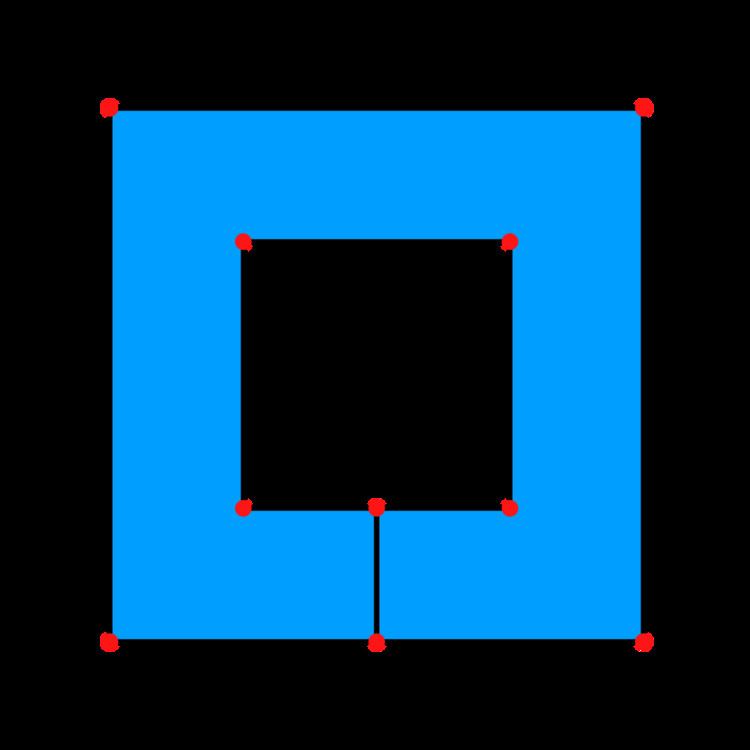 | ||
In geometry a simple polygon /ˈpɒlɪɡɒn/ is a flat shape consisting of straight, non-intersecting line segments or "sides" that are joined pair-wise to form a closed path. If the sides intersect then the polygon is not simple. The qualifier "simple" is frequently omitted, with the above definition then being understood to define a polygon in general.
Contents
The definition given above ensures the following properties:
Two edges meeting at a corner are usually required to form an angle that is not straight (180°); otherwise, the collinear line segments will be considered parts of a single side.
Mathematicians typically use "polygon" to refer only to the shape made up by the line segments, not the enclosed region, however some may use "polygon" to refer to a plane figure that is bounded by a closed path, composed of a finite sequence of straight line segments (i.e., by a closed polygonal chain). According to the definition in use, this boundary may or may not form part of the polygon itself.
Simple polygons are also called Jordan polygons, because the Jordan curve theorem can be used to prove that such a polygon divides the plane into two regions, the region inside it and the region outside it. A polygon in the plane is simple if and only if it is topologically equivalent to a circle. Its interior is topologically equivalent to a disk.
Weakly simple polygon
If a collection of non-crossing line segments forms the boundary of a region of the plane that is topologically equivalent to a disk, then this boundary is called a weakly simple polygon. In the image on the left, ABCDEFGHJKLM is a weakly simple polygon according to this definition, with the color blue marking the region for which it is the boundary. This type of weakly simple polygon can arise in computer graphics and CAD as a computer representation of polygonal regions with holes: for each hole a "cut" is created to connect it to an external boundary. Referring to the image above, ABCM is an external boundary of a planar region with a hole FGHJ. The cut ED connects the hole with the exterior and is traversed twice in the resulting weakly simple polygonal representation.
In an alternative and more general definition of weakly simple polygons, they are the limits of sequences of simple polygons of the same combinatorial type, with the convergence under the Fréchet distance. This formalizes the notion that such a polygon allows segments to touch but not to cross. However, this type of weakly simple polygon does not need to form the boundary of a region, as its "interior" can be empty. For example, referring to the image above, the polygonal chain ABCBA is a weakly simple polygon according to this definition: it may be viewed as the limit of "squeezing" of the polygon ABCFGHA.
Computational problems
In computational geometry, several important computational tasks involve inputs in the form of a simple polygon; in each of these problems, the distinction between the interior and exterior is crucial in the problem definition.
